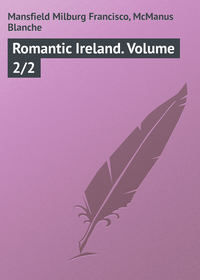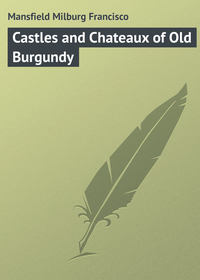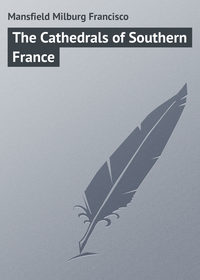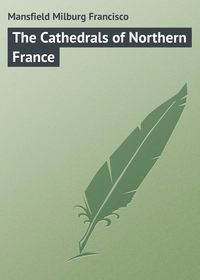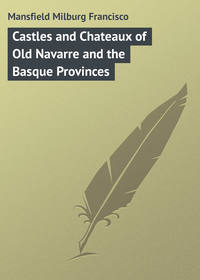 полная версия
полная версияIn the Land of Mosques & Minarets
At the age of four years the young camel is put to work, and carries a rider, two barrels of wine or two gunny-sacks filled with crockery or ironware indiscriminately. His average life is twenty years, and, as with the horse, one reckons his age by his teeth.
The Arab gets an astonishing amount of work out of an apparently unwilling camel. He encourages him with punches, and beatings and oaths and songs. Yes, the Arab camel-driver even sings to his camel to induce him to get along faster, and plays a screechy air on the galoubet; and the curious thing is that the flagging energies of a camel will revive immediately his driver begins to drone. It is a custom which has come down from antiquity, and soon one may expect every caravan to carry its own phonograph and megaphone.
The chief of these airs, rendered into French for us by a lisping, blue-eyed Arab, was, as near as may be: —
“Battez pour nous,Battez pour nous,O Chameaux!Battez pour nous,Battez pour nous,Chameaux, pour vos maîtres!”No very great rhyme or rhythm there, but it suits the camel’s taste in poesy.
To “vagabond” with a camel caravan would be the very ideal of a simple life. The life of a caravan to-day is as it was in Bible times, except that one carries a “Smith and Wesson” or a “Colt” instead of a spear.
The following essential facts apply to all the camel caravans making their respective ways from the coast towns of the northern provinces down into the Soudan and the Sahara. The caravan usually makes its day’s journey between wells, or at least plans to stop at a source of water at night rather than push on; this in case one has not been previously passed by, and every one become refreshed a short time before.
A dozen to thirty kilometres or so a day is the average commercial caravan journey, – for a part of the outfit walks, it must be remembered, – and an eight or ten weeks’ itinerary is the duration of the average journey. Such food as is carried is generally of pounded dates and figs in the form of a paste, which the dry climate more or less petrifies.
The Arab trader, the chief of the trading caravan, and the city merchant en voyage, be he Arab. Turk, or Jew, is a man of position, the others are mere helpers, employés or perhaps slaves.
At each important halting-place of a caravan the Sheik’s great tent is unstrapped from its camel bearer and set up on a pied de terre in as likely a spot as may be found. The Arab tent is no haphazard shack or shelter; it is a thing of convention, and has its shape and size laid down by tradition.
The great central post or pillar has a height of two and a half metres, and the perches, or entrance posts, have a height of two metres, and a considerable inclination, whereas the central one is perpendicular.
The tent proper, the covering, is invariably of alternate black and brown or brown and white woollen bands, sewn together with a stout thread of camel’s-hair. These bands are called felidj and have a width usually of seventy-five centimetres.
Within there is no furniture properly called, simply the provision for a nomad life, sacks of grain, dates, figs or olives, a few pots and pans, harness, etc., and a few smaller sacks or bags, cachettes, where the womenfolk hide their earrings, corals, and brooches. These last are usually used as pillows at night. It is a law of somebody – perhaps the Prophet – that none of the Arabs’ tent accessories must be of wood or iron, save the tent poles, which are of both, being made of wood and shod with iron; thus all utensils and other furnishings are of skins or mats, and dishes of woven grass, and all cords are of spun camel’s-hair. A few copper pots and pans there are of necessity, and a few rude crockery bowls.
The desert caravans form to-day the same classic pictures as of yore as they thread the trails and paths, obscure and involved enough to the stranger, but plain sailing to the chief or guide of a caravan who precedes the following “squadrons” as a Malay pilot precedes his ship.
“At the head of his dusty caravan,Laden with treasures from realms afar…Through the clouds of dust by the caravan raisedCame the flash of harness and jewelled sheath.”The chief of a tribe, or even a caravan, is a very grand personage among his fellows, and when he is en route rides apart and sleeps in a palanquin or attouch, an attouch being no other thing than a cabin on a ship; here a cabin on the ship of the desert.
The attouch, to be à la mode, must have a tall, chimney-like ventilator rising in the middle and tipped with ostrich plumes. Generally this retreat is large enough to shelter two persons, – always persons of importance in an ostrich-feather-tipped attouch, a sheik and his favourite wife, for example.
The caravans of to-day vary in size from a dozen to fifty camels to a train of four, five, or seven hundred (in Tripoli). Under certain conditions, after a long journey, the camel carriers – the freighters – are usually allowed to rest a matter of days, weeks, or even months, according to the lack of necessitous conditions for pushing on and for recuperation. One of the chief trading towns of the Tripoli caravans to-day in Africa is Kano, a place ruled by a native chief and inhabited by a black population. The chief, for a consideration, affords shelter and protection, and the Arabs of the caravan open up shop and do business in the real county-fair style that they knew before county fairs were even thought of. Native products are bought or traded for in return, and such currency as passes is a sort of wampum made of shells and a few Maria Theresa dollars. Barter, or mere swapping, with a bonus on one side or the other, is the usual caravan Arabs’ idea of merchandizing, and the European can as often get a native-made woollen burnous or a camel’s-hair blanket by the exchange of a “dollar watch” or a “Seth Thomas clock,” as he can by giving up two or three gold louis.
The proper benediction to cast down on the head of any Sheik who may have shown you a courtesy en route is to say in simple French: – “Merci, noble Sheik, de ta générosité. Que la bénédiction d’Allah descende sur toi, sur tes femmes, tes enfants, tes troupeaux et ta tribu.” If you can give him a slab of milk chocolate or a piece of “pepsin” chewing gum, he will appreciate that, too.
The negroes and negresses accompanying the caravans walk, but the Arab either rides camel-back or horseback, like the veritable king of his own little kingdom, which, virtually, every Arab is when he is on the open plain.
The Touaregs, south of Touggourt, one of the real, genuine, Simon-pure tribes of desert Arabs, are not given to the trafficking and merchandizing of those who live down on the coast. Their chief, and in many cases, sole occupation consists in catering for the migratory caravan outfits, selling them dates and mutton and water, for if a Touareg can discover anywhere an unworked oasis with a spring, he has got something which to him is very nearly as good as a gold mine.
Among the Touaregs there are blacks and whites; the whites dress like the conventional Arabs, but the blacks after a fashion more like that of the savage blacks further south. The three superimposed blouses are never too great a weight or thickness for the genuine Arab, even in the blazing furnace of the Sahara. They ward off heat and cold alike.
One of Napoleon’s famous sayings, forgotten almost in favour of others still more famous, was: “Of all obstacles which oppose an army on the march, the greatest, the most difficult to remove, is the desert.”
One imagines the desert as a great, flat, sandy plain with illimitable horizons, like the flat bed of a dried-out ocean. This is a misconception of our youth, brought about by too diligent an application to the precepts of the copy-book and the school geography. All things are possible in the vrai désert. The oasis is not the only interpolation in the monotonous landscape. There are great chotts or marsh tracts, even depressions where a murky alkaline water, unfit for man or beast, is always to be found, vast stretches of rocky plateau, great dunes of sand and even jutting peaks of bare and wind-swept rock, with surfaces as smooth as if washed by the waves of the ocean. These are the common desert characteristics throughout the Sahara, from the Gulf of Gabès to the Moroccan frontier and beyond. Occasionally there are the palpable evidences of new-made volcanic soil, and even granite and sandstone eminences half buried in some engulfing wave of sand swept up by the last sirocco that passed that way.
Over all, however, is an evident and almost impenetrable haze. At a certain moment of one’s progress in the desert, he sees nothing of distinction before or behind or right or left, and at the next finds himself close to a pyramid of rock fifty feet high. Really the desert is very bewildering and enigmatic, and the Arab who navigates it with his caravan is like the sailor on the deep sea. He has to take his bearings every once and again or he is lost and perhaps engulfed.
It is the fashion to write and speak of the mystery of the desert, but in truth there is no mystery about it, albeit its moods are varied and inexplicable at times. To the solitary traveller there is an interest in the desert unknown to seas, or mountains, or even to rolling prairies. Above is a sky of stainless beauty, and the splendour of a pitiless, blinding glare; the sirocco caresses you like a lion with flaming breath; all round lie drifted sand-heaps, where the wind leaves its trace in solid waves. Flayed rocks are here, skeletons of mountains, and hard, unbroken, sun-dried plains, over which he who rides is spurred by the idea that the bursting of a water-skin, or the pricking of a camel’s hoof, would be a certain lingering death of torture. The springs seem to cry the warning words, “Drink and away!” There is nothing mysterious or dull about such a land, indeed it is very real and exciting, and man has as much opportunity here as anywhere of measuring his forces with Nature’s, and of emerging, if possible, triumphant from the trial. This explains the Arab’s proverb: “Voyaging is victory.” In the desert, even more than upon the ocean, there is present death; hardship is there, and piracy, and ship-wreck.
Newcomers to Algeria and Tunisia talk of the monotonous calm of the sand dunes of the desert; but those who know its silences best find nothing monotonous about them. It is as the automobilist expresses it with regard to the great tree-lined “Routes Nationales” of France – “there is sameness, but not monotony.” One does not become ennuied in the desert. He may be alone within a circle of many miles radius, but each glint and glimmer of sunlight, each leaping gazelle and Saharan hare – really a jack-rabbit – keeps him company, and when a camel caravan or a patrol of Spahis rises on the horizon, he feels as “crowded” as he would in a “bridge crush” in New York, or on the Boulevard des Italiens on a fête-day.
Here at one side is a shepherd’s striped tent, surrounded by bleating sheep and goats and tended by a lean, lonesome Arab who is apparently bored stiff with lonesomeness. His is a lonesome life indeed, like that of a shepherd anywhere, and when night comes – often drear and chill even in the Sahara – he slips under his tent flap, pulls his burnous up around his ears and trusts to luck that no jackal will make away with a kid or lamb while he sleeps. He is not paid to sleep by the owner of the flock (a franc and a quarter a day, out of which he feeds himself), but still, sleep he must. Fatigue comes even to a lazy Arab sheep-herder, and he’d rather fall sound asleep beside a brazier inside his tent than doze intermittently before a fire of brushwood in the open. Who would not, at a franc and a quarter a day; particularly as the day includes the night! There is no eight-hour day in the desert.
Before he sleeps, he munches a “pain Arab” and pulls his matoui from his belt, from which he fills his pipe with kif and soon smokes himself into insensibility. Poor sheep and goats, what may not happen to them whilst their guardian is in his paradise of burnt hemp!
In the little oasis settlements where there are natural springs, and not at the Bordjs or government posts of relays, one’s sight is gladdened with flowering fig and almond blooms or fruits and bizarre spiny cacti with pink laurel and palms in all the subtropical profusion of a happy sunlight land. The chief characteristics of an oasis are the superb giant palm-trees, their aigrettes reaching skywards almost to infinity, the azure blue cut into fantastic, fairy shapes, which no artist can paint and no kodakist snap in all their fleeting grace.
Here dwell a few score of sheep, goat, horse, or camel owning Arabs, who mysteriously live off of nothing at all, except when they sell a kid or a baby camel to a passing caravan. It is the simple life with a vengeance! And the children play about in the shadow of the tents naked as worms, and, as they grow up, marry, and adopt by instinct the same idle life. They know no ideas of progress, and perhaps are the happier for it.
The colour effects in the desert are things to make an artist rave. The dunes change colour with each hour of the day, and the silver light of the sunrise and the streaky blood-red and orange of the sunsets are marvels to be seen nowhere else on earth.
The temperature in the desert frequently changes with a suddenness that would be remarked in Paris, the place par excellence in Europe where the changes in temperature are most trying; or in Marseilles, where, from a subtropical summer sun, one can be transplanted on the breath of the mistral into the midst of an Alpine winter in the twinkling of an eye. Fifty degrees centigrade at high noon in the desert may be followed by ten degrees at midnight. That’s a change of seventy-two degrees Fahrenheit, and that’s something.
CHAPTER XII
SOLDIERS SAVAGE AND CIVILIZED – LÉGIONNAIRES AND SPAHIS
ALGERIA is guarded by an army of 60,000 men. But they keep the peace only, for there is no warfare in Algeria or Tunisia to-day. In the days of the Roman legions less than half that number of men fought for and held all North Africa. France recognizes that the development of a new country depends more upon the military than all else. The Spahis, the Chasseurs d’Afrique, and the Légionnaires have won most of France’s battles in Algeria; and for this reason these great colonial corps are given a high place in the military establishment.
When they have fought they have fought well, and when they have died they have died gloriously. The last “little affair” was in 1903, when a hundred Spahis and horsemen of the Legion were attacked at El-Moungar, near the Moroccan frontier. They fought like lions until reinforcements arrived, and but thirty odd remained alive. Among the Légionnaires who died were a Spanish captain and a German lieutenant, for the Légion Étrangère demands nothing of any who would enlist in its ranks but his name and an affirmative to the question – “Will you fight?” The survivors of this engagement all received the Médaille Coloniale and the Saharan Clasp.
Now a more important move in the military game is being played across the frontier in Morocco itself, and 12,000 of Algeria’s native soldiery is cast for the chief rôle. The soldiers of the Foreign Legion are of all nationalities under the sun. Some of them are scoundrels, no doubt, or were until military discipline made them brace up, but others are as refined as the gentleman and officer of convention.
We met many Italians, Swiss, Germans, and Irishmen, and the Germans were not Alsatians, either, but real Platt-deutsch, from Bremen. In more than one instance they had been drummed out of their own regiment for some disgrace and enlisted anew in France’s Légion Étrangère that they might begin life over again. The real soldier of fortune exists nowhere in so large a proportion as in this corps.
Certain of the French troops in Africa are not usually the flower of the army, often they are disciplinaires sent out from home. At any rate when you see one of them robbing a poor peanut merchant who solicited him to buy dis nois poeur uné sous, you are quite ready to believe he needs disciplining. The Arab under such circumstances gives the tou-tou a tongue-lashing, which for invective could hardly be equalled: “Infamous belly of a snake,” “Canaille,” “Sale yondi, where is your politeness,” “Ouf, I’ll ram another handful down your camel throat and charge you nothing, either – salop de cochon!” The Arab is fast becoming Frenchified, as the above will indicate.
The next minute the seller of cacaoettes– which is a prettier name for peanuts than we have – turns to you calmly and says humbly: “Pardon, Sidi, will you buy some nuts?” And you buy them, ten sous worth, which is enough money in hand to keep him for twenty-four hours, just because he is so good an actor.
The sixty odd thousand regular soldiery in Algeria are virtually military police and civil engineers. The Arab-Berber population are no more likely to revolt, though they did it successfully enough in 1871, when France thought she had them subdued; and so, as a sort of police precaution, France keeps a very active army on the spot. If a nation possesses a vast territory, it must be policed somehow, and this is the French idea of doing it, for in the above number are counted the gendarmerie or national police.
One romantic character stands out plainly in the history of Algeria in these later years, and that is Yusuf, the name of the ideal native soldier who was a prodigious figure of the early nineteenth century. His personality was most strange. Bearer of an Arab name, he was the personification of a chivalrous military heroism consecrated to a country not his own; and France, contrary to her usual procedure, has seemingly neglected his fame and that of his descendants.
It was to Yusuf, in effect, that was due the security of the environs of Algiers from the conquest of 1833 to the extinction of the revolt of 1871. From the first landing of General Bourmont, the deliverer of Algeria, Yusuf was employed in every possible capacity; and the ancient slave of the Turkish ruler and the favourite of the Bey of Tunis became the symbol of law and progress. His sabre was henceforth to be used for Christianity, and not on behalf of paganism and rapine. Yusuf at the head of his Spahis is a noble and imposing figure of the African portrait gallery. He is almost invariably young, splendid of form and fastidious and luxurious in his dress; a superb romantic dream of the Orient, but adaptable and capable of absorbing European ideas.
Authors, artists, and princes have attempted to idealize Yusuf, but the task was futile. Louis-Philippe, Louis Bonaparte, Alexandre Dumas, Gautier, Horace Vernet, Delacroix, and Bugeaud have sung his praises afar; but he remains to-day the unspoiled, faithful servant of a government and faith as foreign to his own as the red Indian is to the Parisian.
Homage! Frenchmen and Algerians, and all others who know and love the land which smiles so bravely under the African sun, to Yusuf the warrior, the diplomat, and chien fidèle!
The Spahis, or native soldiery, made up from the Yusufs of all Algeria, are in great repute with their European officers, whatever the bureaucrats of the Boulevard Saint Germain may think. To the former he has:
“La main toujours ouverte,Le sabre toujours tiré,Une seule parole,”and he is obedient to his superiors. This is a good formula upon which to mould a soldier.
The Spahis and Turcos of Algeria fought for France, too, on the mainland, in that unhappy and unnecessary “woman’s war” with Germany in 1871. The Germans protested against the employment of these “savages;” but the precept was England’s when she enlisted the red man against the North American colonist in 1776, and then, too, she hired Hessians for the job (who were Germans) and according to the traditionary tales concerning those mercenaries, they came about as near being “savages” as anything which ever walked on two feet.
The “Chanson du Spahi” is a classic in the land. It recounts in dulcet French phrase the whole life of one of these noble native soldiery enlisted in the ranks of the French army organization.
It is a veritable Odyssey, commencing with: —
“J’é’tais jeune, le cadet dans la tente de mon père.Le cadet de ses fils beaux comme des lions,”and ending with: —
“Qui pleurera sur la tombe du soldat orphelin.”The Spahi’s costume is fearfully and wonderfully made. It is gorgeous beyond that of any other soldiery; and yet it is most suitable for campaigning after the Spahi fashion. The waving burnous, the haïk, the broidered vest, the turban wound with camel’s-hair, red boots, and much gold braid make the Spahi dazzling to behold.
When it comes to the accoutrements of his horse the same thing is true. His saddle is a veritable seat, not a mere pad, and weighs ten times as much as a European saddle, his stirrups alone weighing as much. Instead of a single blanket, the Spahi trooper has a half a dozen variegated saddle-cloths, very spectacular, if not useful.
The barracks of the native soldiers in Algeria are bare, but with European fitments of iron bedsteads, etc. The religion of the Mussulman does not demand, nor indeed permit pictures or images of his God; and so, any substitute for the ikons of the Russian, and the crucifixes of the French soldier are absent.
In Algeria, besides the Spahis and the tirailleurs, each so picturesque whenever grouped with the North African landscape, there is a special field force of men from the south, pure Arab types, men of the desert, and scouts of the very first rank. All these military types are what is defined as native voluntary soldiery, the indigène not being subject to military conscription. Perhaps they are the better soldiers for this, since they adopt it voluntarily as a profession, but a discussion of the subject is not one of sufficient moment to take space here.
Each tribe of the south – whose civil administration, be it recalled, is in the hands of the native Sheik and the Cadi – is bound to furnish, at the need of the French government, whether for service within the limits of Algeria or out of it, a group of a certain proportionate size of able-bodied fighting men. These voluntary fighters of the open country, known as goums, are versed in many of the wiles of warfare of which the garrison-trained soldier is ignorant; and, upon a simple requisition, the chief of a tribe is bound to furnish his quota of these plainsmen. It is a duty owed to the French government for the protection and lawful status which it gives each individual tribe and its members; and this soldiery is not only voluntary, but serves, without salary, drawing only munitions of war and nourishment from the public war-chest, and furnishing even its own horses and guns.
The goum is a picturesque and original type of soldier. He rides a stocky Arabian horse, gaily caparisoned with a gaudy parti-coloured harness and saddle-cloth, and sits in a high-backed saddle, as if on a throne. His costume is fascinating, if crude, in the flowing lines of his burnous, his boots of bright red or yellow leather, and his great high-crowned straw hat, like no other form of head-gear on earth except the Mexican’s sombrero. He is proud of his occupation, and would rather fight than eat, at least one judges that this is the case in that he fights for France without pay.
The goums are a sort of savage soldiery, if you like to think of them as such, but they are not guerillas. Their efficacy in various little wars has been tried and tried again; and, recently, in Morocco, the first successful raids into the open country of the fanatical Moroccans were only made possible by the lances of a column of goums which only the day before had landed at Casablanca from the steamer from Oran. Regular soldiery has to get acclimated when fighting in a new and untried country, but the goum of the Sud-Algerien got down to business immediately in Morocco and gave the French a firm grasp on things, whilst the regular troops, also imported from the plains of Algeria, were getting used to the mountains, and the garrison troops of Tizi-Ouzou were trying to adapt themselves to the mode of life necessary for good health in a seaport town. The ways of most War Departments in moving troops about from one strategic point to another have ever been erratic, and that of the French is no exception. The goum of Algeria saved the day for France in Algeria, and perhaps by the time these lines are printed will have added another gem to the colonial diadem of France. If not so soon, why later on.





